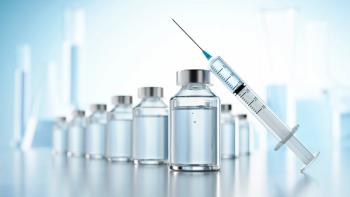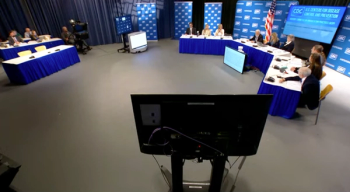
Millions of lives and billions of dollars: the need for earlier intervention in chronic kidney disease
Our country must do better against a disease that has become a national silent killer. There is a way for primary care to join the fight.
Chronic kidney disease (CKD), the fastest growing non-contagious disease in the United States, is
There is a critical and urgent need for earlier CKD diagnosis and treatment. This will not only save lives, it will also save taxpayers, health insurers and employers billions of dollars.
Kidney disease puts people at higher risk of stroke, heart attack and death. But because it usually advances slowly and asymptomatically, and because incentives are currently lacking in the health care system for early diagnosis, too many people are going undiagnosed in the earlier stages, when it is most treatable. In fact,
Because of the shortage of donor organs, 97% of people who develop kidney failure will need dialysis to survive. The waiting list for a kidney can last years, and 13 people die every day while waiting.
While chronic and rare kidney diseases are not reversible, the treatment landscape has evolved significantly in recent years, as innovative diagnostics and treatments that are key to lowering CKD’s human and economic burden have become available.
Unfortunately, there are challenges that impact diagnosis, including lack of screening and gaps in CKD knowledge and understanding among primary care providers. The United States Preventive Services Task Force (USPSTF), which is charged with making preventive care recommendations for primary care clinicians, is currently reviewing evidence and updating its recommendations for CKD screening. It is our hope that the USPSTF will make a recommendation that better reflects the value of CKD screening in improving health outcomes. A recently published
In fact, primary care providers can play an important role in identifying patients earlier on, particularly through complete testing that includes urine testing.
The American Kidney Fund (AKF) released a
The fundamental reason to improve CKD detection and treatment is because doing so will save countless lives. The potential savings to the federal government from earlier diagnosis and treatment of CKD is also very significant. Because almost all people on dialysis become eligible for Medicare, regardless of age, helping people avoid dialysis would significantly reduce costs to Medicare and our health system in general.
We found that by reducing the share of people who progress to later stages of kidney disease, Medicare could save an estimated $9 billion per year, while commercial payers and employers could save an additional $2.8 billion annually. Over a 10-year period, this amounts to a $90 billion savings opportunity for Medicare and nearly $30 billion in savings for commercial payers and employers.
More than 800,000 Americans have kidney failure today, and Medicare is spending over $50 billion each year on end stage renal disease (ESRD) beneficiaries alone. This equates to $80,000 in taxpayer dollars per Medicare ESRD beneficiary annually – almost six times what is spent on the average Medicare beneficiary each year.
System-wide, we are missing out on the opportunity to significantly reduce the mortality and morbidity for hundreds of thousands of Americans by failing to incentivize upstream care that can lead to a lifesaving diagnosis and limit disease progression. Until we take action, CKD’s reputation as a silent killer is unlikely to change.
To help support data-driven, common-sense solutions to combat this devastating disease, we need policies that enable proper reimbursement for preventive care, provide better access to innovative medicines, improve education for people living with kidney disease and their caregivers, and support earlier, more complete diagnosis.
As Congress continues to look for innovative ways to rein in health care costs, the burden of CKD must be addressed. Incentivizing earlier diagnosis and treatment has the potential to save lives, prevent or delay kidney failure, and stretch taxpayer-funded Medicare dollars.
Momentum is in our favor as medical advances continue to progress and lawmakers on both sides of the aisle recognize the importance of chronic disease prevention. But we must act with urgency to make CKD a top national priority. Too many lives have already been lost, and countless more lives are at stake.
LaVarne Addison Burton, MA, is president and chief executive officer of the American Kidney Fund (AKF), a national nonprofit organization whose mission is to fight kidney disease and help people live healthier lives.
Newsletter
Stay informed and empowered with Medical Economics enewsletter, delivering expert insights, financial strategies, practice management tips and technology trends — tailored for today’s physicians.















